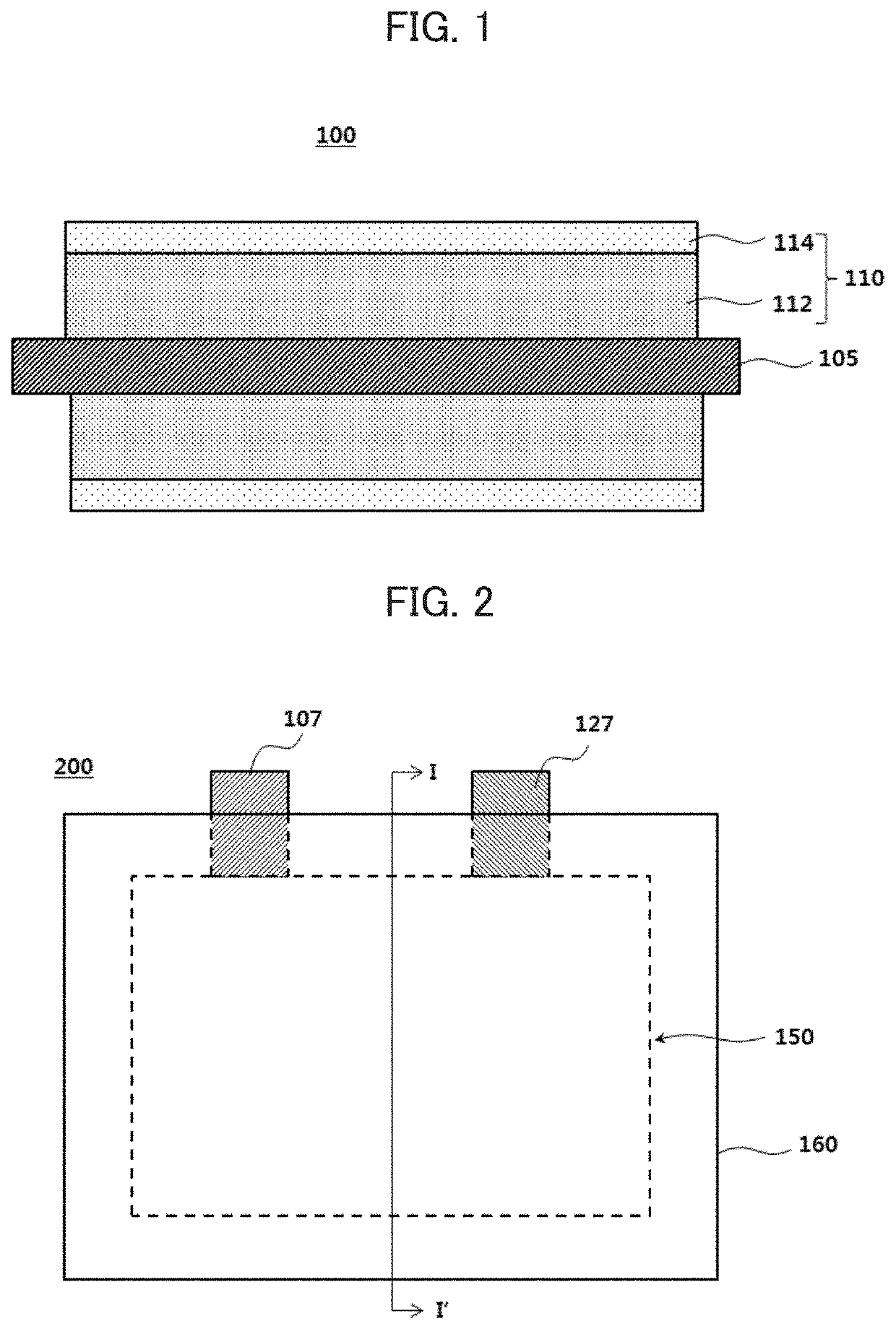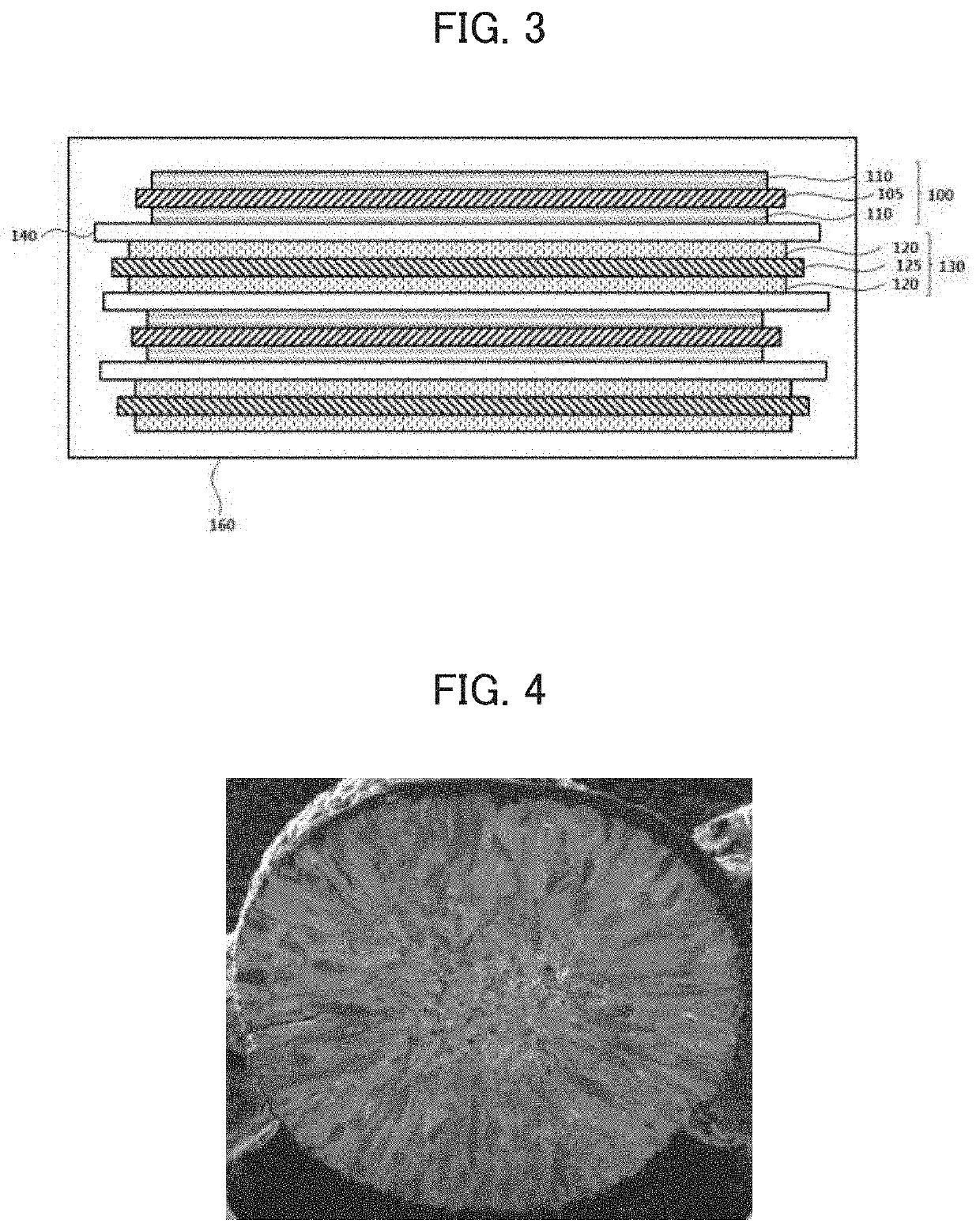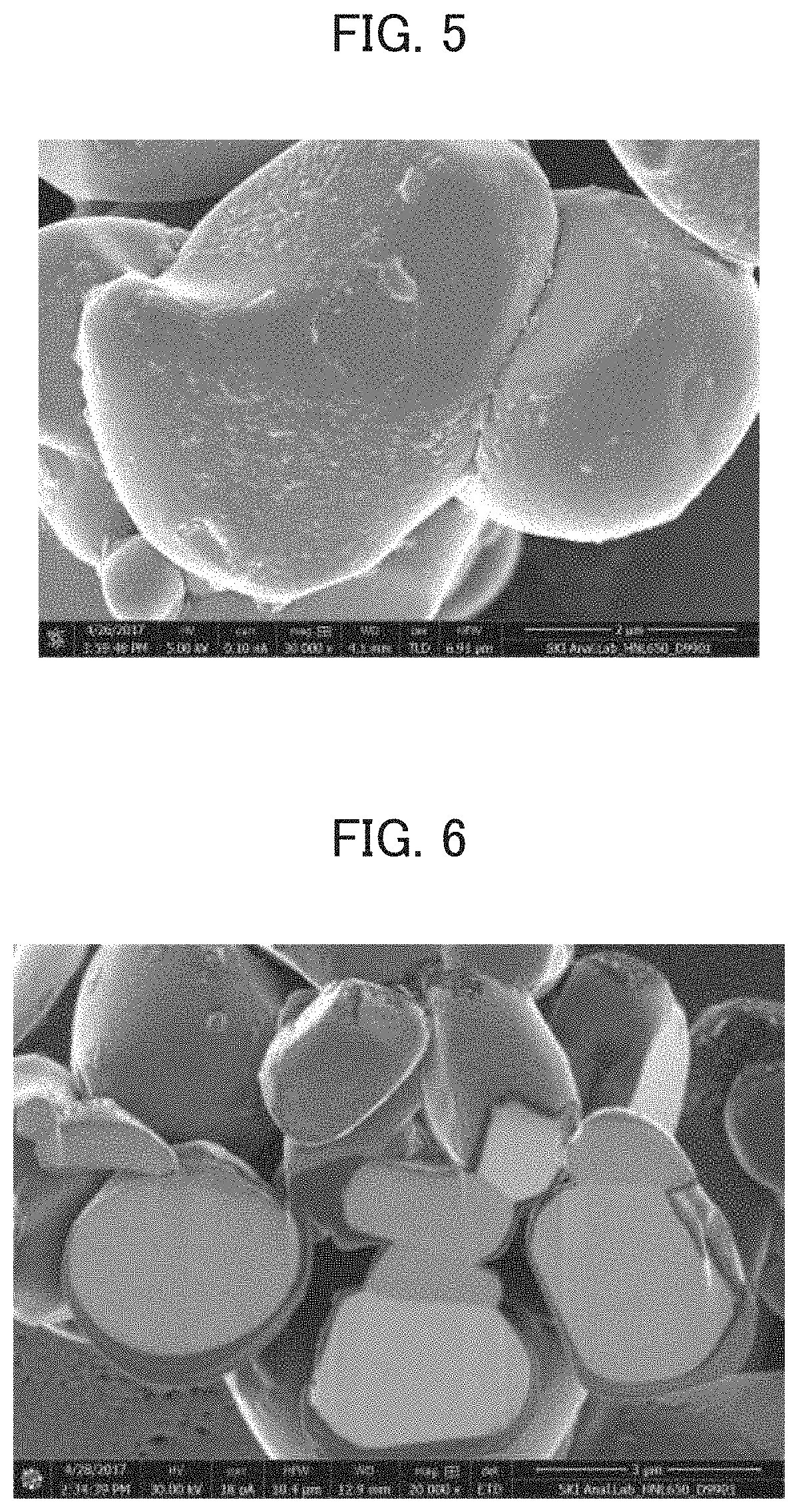Lithium secondary battery
a secondary battery and lithium battery technology, applied in the direction of active material electrodes, positive electrodes, cell components, etc., can solve the problems of insufficient life-span and stability, inability to achieve cathode active materials for implementing the above properties, etc., to improve thermal stability and penetration stability, high power output, and high capacity properties
- Summary
- Abstract
- Description
- Claims
- Application Information
AI Technical Summary
Benefits of technology
Problems solved by technology
Method used
Image
Examples
example 1
[0124](1) Preparation of First Cathode Active Material Particle
[0125]A total target composition was LiNi0.8Co0.1Mn0.1O2, a target composition at a core region was LiNi0.842Co0.11Mn0.05O2, and a target composition at a shell region was LiNi0.78Co0.10Mn0.1.2O2. A concentration gradient region (decreasing Ni concentration and increasing Mn concentration) was formed between the core region and the shell region by continuously changing a mixing ratio of Ni and Mn precursors to form precipitates and obtain the first cathode active material particle (hereinafter, abbreviated as NCM811).
[0126]As shown in FIG. 4, the first cathode active material particle was formed to have a secondary particle structure (e.g., multi-crystalline structure) in which primary particles were assembled.
[0127](2) Preparation of Second Cathode Active Material Particle
[0128]Ni1 / 3Co1 / 3Mn1 / 3(OH)2 as an NCM precursor, and Li2CO3 and LiOH as lithium sources were gtinded and mixed for 20 minutes. The mixed power was fire...
example 2
[0137]A lithium secondary battery was fabricated by a method the same as that of Example 1 except that a second cathode active material particle prepared as follows was used.
[0138]Ni0.5Co0.2Mn0.3(OH)2 as an NCM precursor, and Li2CO3 and LiOH as lithium sources were grinded and mixed for 20 minutes. The mixed power was fired at 1000° C., for 15 hours, and then grinding, sieving and de-ironing processes rformed to obtain LiNi0.5Co0.2Mn0.3O2 (hereinafter, abbreviated as single crystalline NCM523) of a single particle type.
example 3
[0139]A lithium secondary battery was fabricated by a method the same as that of Example 1 except that a first cathode active material particle having a secondary particle structure with the same total composition as that in Example 1 without a concentration gradient (a molar ratio of Ni, Co and Mn was fixed to 8:1:1 throughout an entire region) was used.
PUM
| Property | Measurement | Unit |
|---|---|---|
| compositions | aaaaa | aaaaa |
| crystalline structures | aaaaa | aaaaa |
| particle structure | aaaaa | aaaaa |
Abstract
Description
Claims
Application Information
 Login to View More
Login to View More - R&D
- Intellectual Property
- Life Sciences
- Materials
- Tech Scout
- Unparalleled Data Quality
- Higher Quality Content
- 60% Fewer Hallucinations
Browse by: Latest US Patents, China's latest patents, Technical Efficacy Thesaurus, Application Domain, Technology Topic, Popular Technical Reports.
© 2025 PatSnap. All rights reserved.Legal|Privacy policy|Modern Slavery Act Transparency Statement|Sitemap|About US| Contact US: help@patsnap.com



